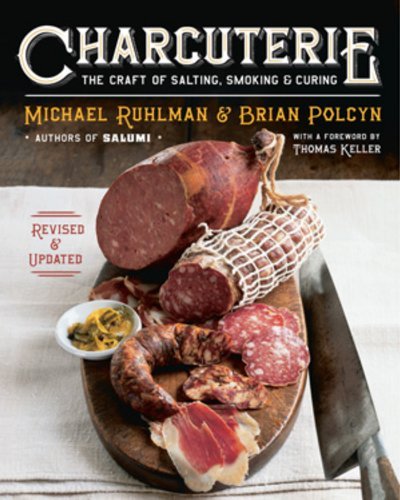Due to the unexpected success of the original edition of this book in 2005 and a surprising surge of interest in cooking heavily salted animal fats coupled with with authors' own continuing education in the subject, a revised and updated version of the text has been published eight years later.
Derived from French words for flesh and cooked, charcuterie - in the sense of salting, smoking, and cooking to preserve meats - has been around since the dawn of mankind, the authors point out. "It has been carried on in many forms through virtually every culture, and it has been one of the foundations of human survival in that it allowed societies to maintain a food surplus and therefor helped turn early peoples from nomads into clusters of homebodies...
"Historians have suggested that our ancestors first discovered cooked food in the form of animals that had perished in forest fires, and then began to cook food on purpose. Regardless of how they discovered cooking, they surely realized that cooking made food not only taste good but last longer as well."
A successful collaboration of food writer Michael Ruhlman and chef Brian Polcyn, a well-regarded authority on the techniques of charcuterie, this edition does without ingredients used in commercial processing that aren't necessary for home cooking and makes its curing-salt concentrations uniform.
The authors also added advice on using starter cultures such as Bactoferm F-RM-52 in making sausage. The live bacteria control the growth of unwanted bacteria and give the meat a tanginess found in Old-World dried sausages.
The new edition retains its classic recipes and instructions for duck confit, prosciutto, sausages, pâté de campagne, knackwurst and more.
Detailed line drawings detail techniques for brining chicken, making pancetta, curing salmon, making pâté en croûte, and sausage seasoning, grinding, mixing, stuffing and linking. Sources for supplies and special ingredients are included in the back of the book.
